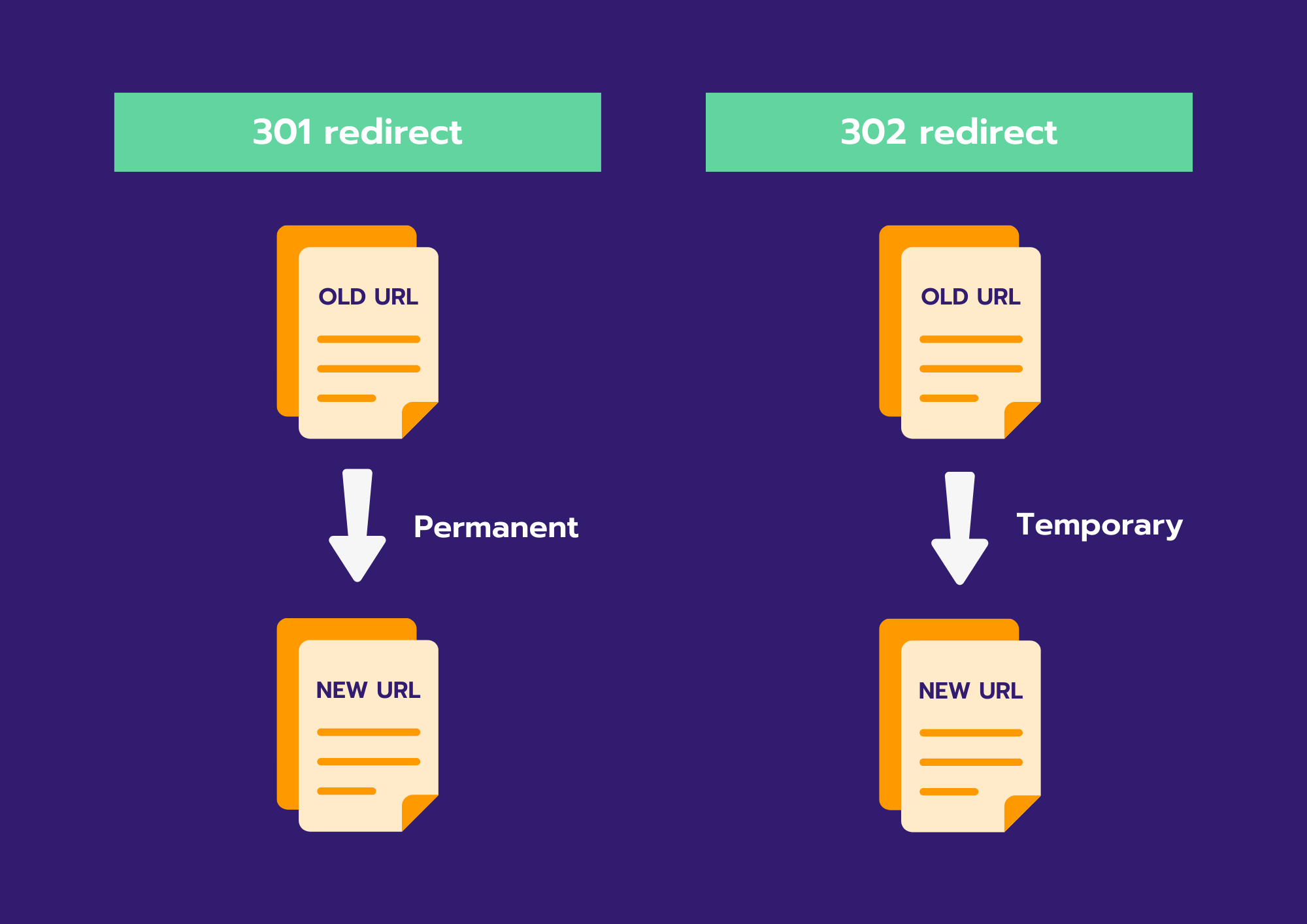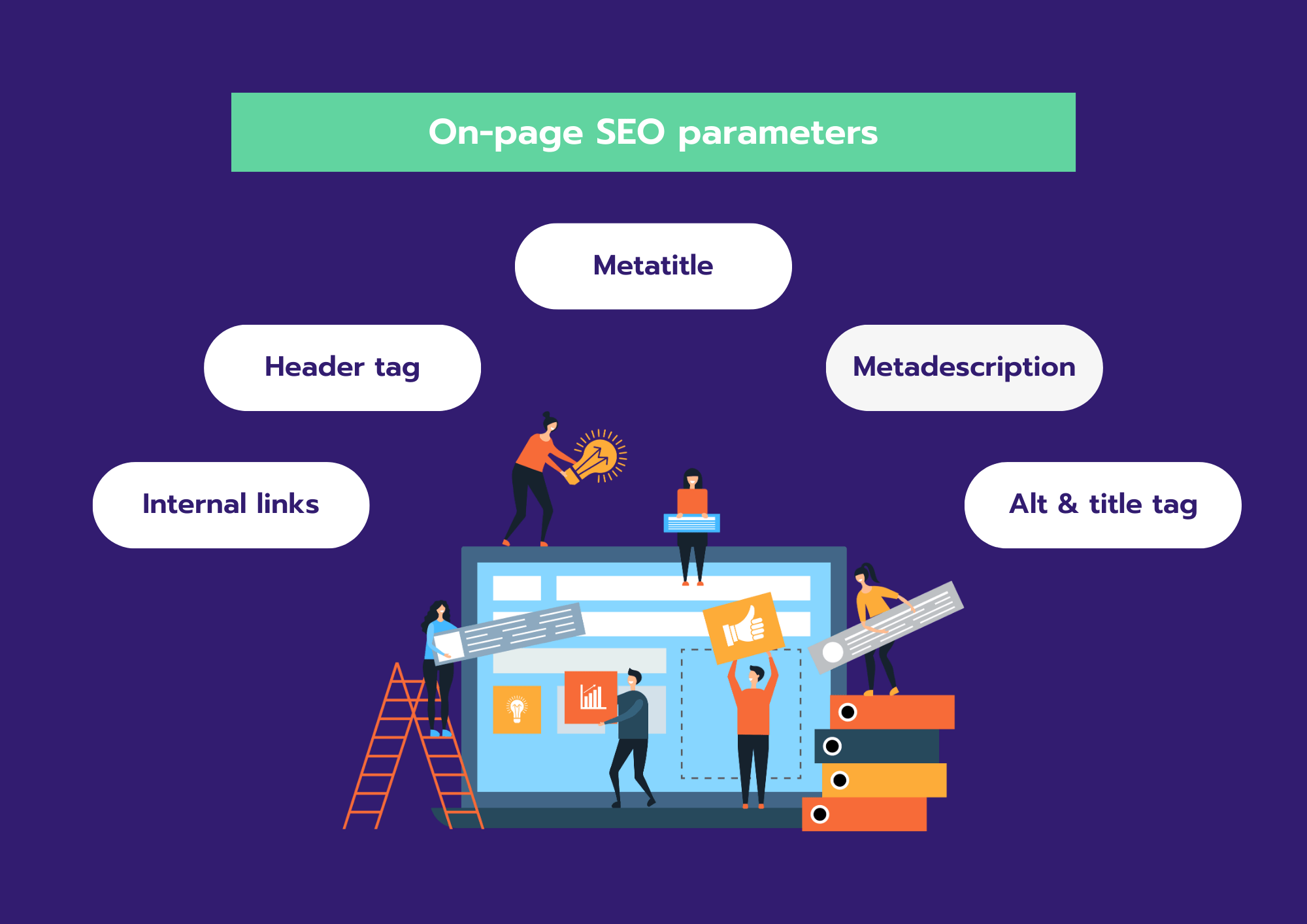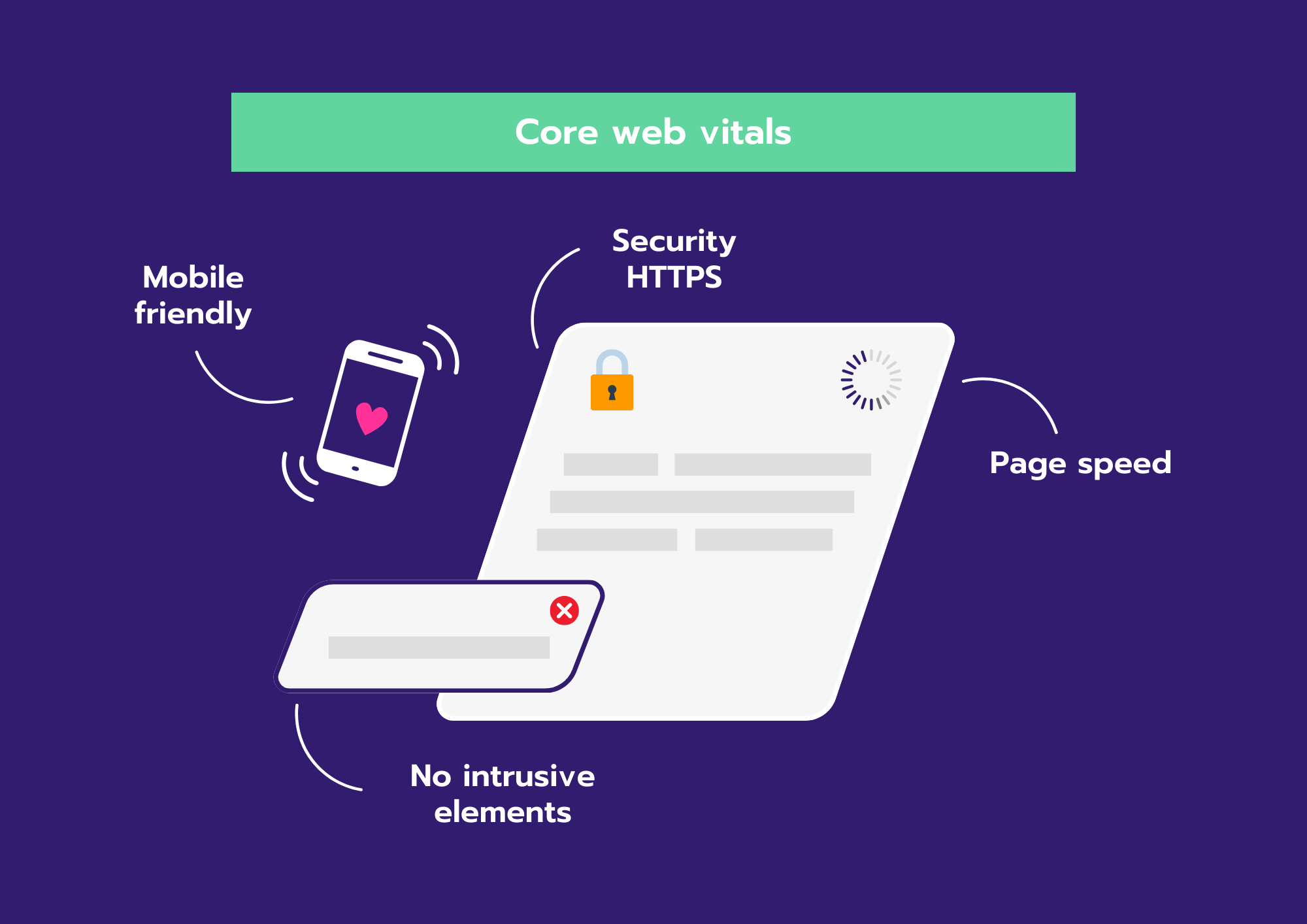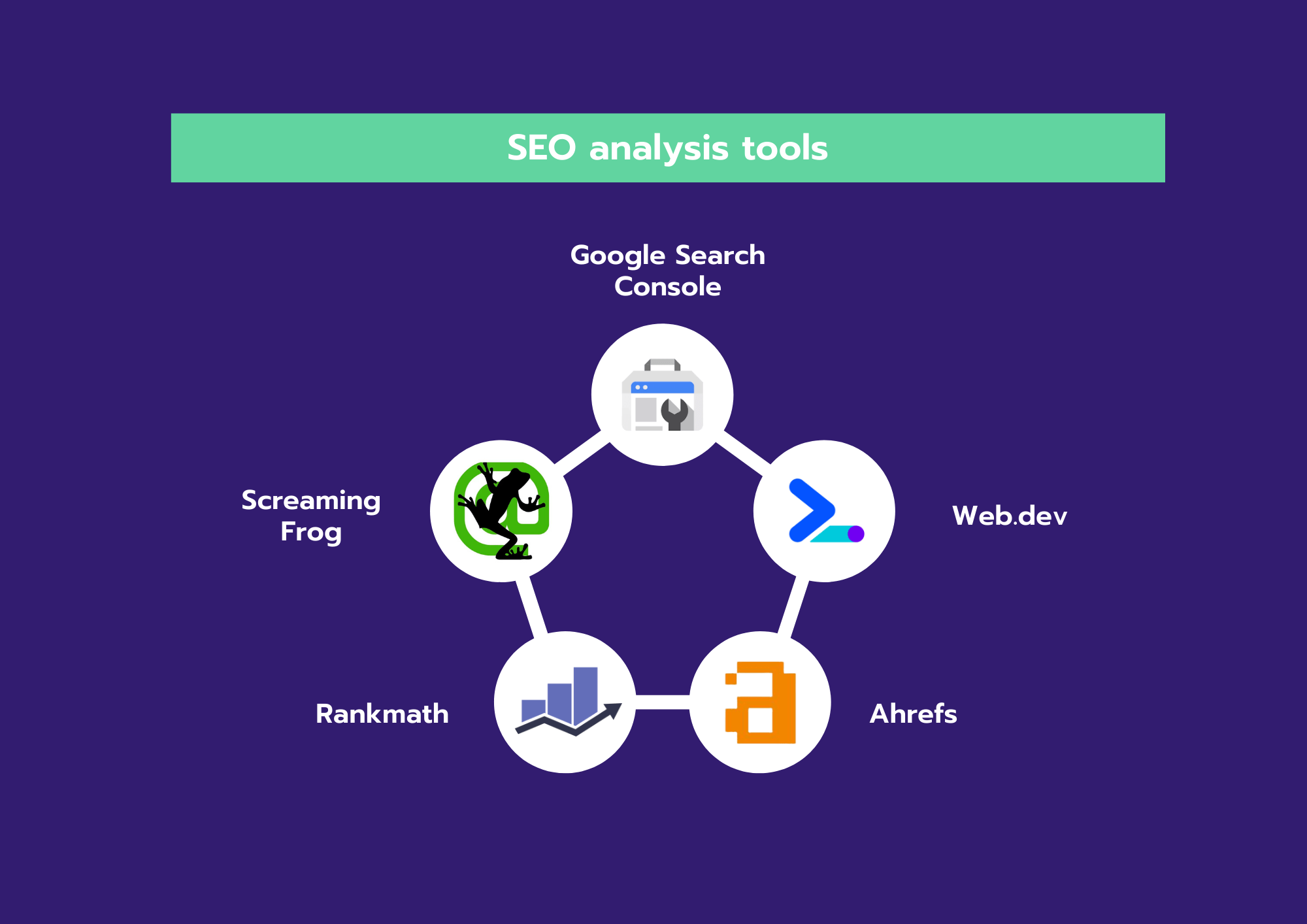How to conduct a technical SEO audit in 10 steps
Step 1: Check indexability
Indexing means that your web pages are registered by a search engine. A crawler visits the pages and scans their content. Google keeps track of which pages are indexed and appear on the search results page (SERP). Some relevant components in a technical SEO audit are:
- 4xx notifications: if you delete a page on your website and visitors still land on that page (via an external link or a listing in Google), they will see a 404 notification. You solve this by placing a reference or redirect on that deleted page to an existing, relevant page. Pay enough attention to that 404 page. With the right message, you'll keep visitors on your site anyway, instead of them leaving your site.
- 5xx notifications: visitors get this message when an outgoing link no longer works or is not set up properly. The solution? Either remove it or change the link to the correct destination.
- Noindex tag: if you place a noindex tag on a page, it will be ignored by crawlers. They will not index the page in question. Search engines generally do listen, so make sure there are no noindex tags on pages that need to be found.
- Xml sitemap: The xml sitemap contains all urls of the pages that are to be indexed. You submit the sitemap in Google Search Console, which speeds up indexing.
- Robot.txt file: this file tells crawlers exactly what to do when they land on your web pages. Where the xml sitemap is located or which pages they should not index, for example.
Step 2: Placing redirects
We just mentioned redirects for 404 notifications. These are vital, because a long list of 404-errors results in a bad SEO-score. When visitors come to a page you have removed, it is better to redirect them to another page. This can be permanent, but also temporary, when a product is temporarily out of stock for example. That ensures a pleasant user experience. Pay special attention to this during the audit:
- Www and non-www: it is possible to reach your website by entering the url with and without www in the search bar. One version you take as the main domain, the other should be redirected automatically. The same goes for http and https.
- Canonical url: Suppose you have two (or more) pages with similar content or a page reachable through two urls. Google will consider those pages as two separate urls, but with the same content (e.g. mobile vs desktop). And that's what the search engine considers duplicate content. A canonical url tells Google which page may be indexed and appears in the search results.

- 302 redirects: this type of redirects are temporary, so they do not forward link value. Is a page permanently deleted? Then you should use the next type of redirect.
- 301 redirects: this is the type to permanently redirect old urls to new ones. With this you do pass link value. When doing an audit it is very important to check these redirects. Mistakes here are detrimental to your SEO.
- Redirect chain: if you redirect to a page that has also been redirected, you create a redirect chain. This results in a longer page load time and is not ideal for indexing by Google. Instead of creating a chain, refer directly to the correct page.
Step 3: Internal and external linking
Links, you know them. The clickable pieces of text that take you to another page on the website (internal links) or to a completely different website (external links). A healthy link structure and the authority you build with it are part of link building. During an SEO audit, it is only a small effort to also verify the following things:
- Broken links: these are links that no longer work, for example, because the page no longer exists. Remove or adjust to a proper destination!
- Pages with too many outgoing links: if there are too many external links on a page, alarm bells start ringing at Google. This is because it may indicate link exchange where you exchange links to your own website for a link to another website. In principle, this is against the rules of the search engine. So be careful with the amount of external links.
- Dofollow links: if a link has a dofollow tag, the link passes value to the destination page. Don't want to pass on value? Then add a nofollow tag.
Step 4: On-page SEO parameters
On-page SEO parameters are snippets of code on a web page. They are not visible to the visitors of that page, but they are visible to search engines. The most important parameters are the metatitle and the metadescription.
- Header tag: also called H1. It is the title of the text on a web page. There should be only one H1 on the entire page. Subtitles, denoted by H2 through H6, are allowed to appear multiple times. When auditing, also check that the H1 is not too long. Preferably no longer than 60 characters.
- Meta title: this is the title that appears in the SERPs and leads to the page in question. Also make sure that it is not too long and that it includes a relevant keyword.
- Meta description: this is the text snippet below the meta title in the search results. A common mistake is that the text snippet is too long and therefore gets hyphenated by Google. So make sure the description is the right length (150 characters) and choose a unique text, not one you use for every page.
In the H1, meta title and description, it is recommended to use relevant keywords. You normally already have these at hand thanks to a thorough keyword research.

Step 5: Optimize images
Images on web pages play an important role for your technical SEO. Google is not yet ready for its algorithm to analyze and interpret image content. Therefore, we add a title and alt text. This is how they provide the search engine with a description of the image. Here's what to pay attention to:
- No optimized title: the title, or file name, must match the content of the images. Automated file names from a smartphone or camera are out of the question.
- Broken images: when the image does not work properly, an error message appears. Delete the image or replace it with one that does work.
- Alt text: when the image does not work, a short description of what exactly is in that image will still appear. That description is called the alt text. Alt texts that are meaningless are best avoided. They describe what is in the image and contain relevant keywords. That helps the visitor understand your page.
Step 6: Multiple languages
If you have pages in different languages, indicate that by adding Hreflang tags. For example, if you offer a page in Dutch, French and English on a Belgian website. It is a piece of code that indicates which language applies to that page. Things might also go wrong with the Hreflang, so check the following during the SEO audit:
- Incorrect language codes
- Missing return links
- Invalid urls
- Non-canonical pages with Hreflang elements
- Conflicting and incomplete Hreflang elements
Step 7: Core web vitals and user experience
Google monitors a number of signals regarding the user experience of your site. Consider page speed, mobile friendliness and security. These are some examples of core web vitals. Core web vitals are an important ranking factor and therefore should not be missing from your technical SEO audit.
- Page speed: page speed logically indicates how long the page takes to load. You can easily measure this via Pagespeed Insights. Handy: you get a score for both the desktop and mobile versions of your website.
- Security: with safe browsing, Google is committed to contributing to a safe World Wide Web. The search engine detects malware on your site and checks that you are using the latest website and server software.
- Https: Due to the encrypted information transmission of the https protocol, important info such as your name, bank account and phone number, is harder to steal. The configuration of this protocol is extremely important.
- Mobile friendliness: through this test from Google, you check if a website is suitable for mobile devices. Do components load fast enough? Are clickable buttons spread far enough apart? Are all images optimized? The design of the mobile version must be fully optimized for a mobile device.
- Intrusive elements: disruptive pop-ups (with the exception of mandatory pop-ups like the cookie banner) are a sign of poor user experience for Google. If you do opt for a pop-up, make it appear only once. It should be easy to close and hide only part of the content.

Step 8: Structured data
Search engines better understand content on web pages when you provide them with structured data. An overview not to be missed during your analysis:
- Microformats: these add semantics to existing elements. Thus, they make it easier for search engines to perform in-depth interpretations.
- The Open Graph: with the information you get from this, you determine how your site is displayed in Facebook when, for example, a link is shared.
Step 9: Other technical factors
Our list of technical factors to look out for during an audit is not exhaustive. There are many other factors, for example:
- Urls: when urls are dynamic and constantly changing, contain too long or strange characters and are thus unreadable, Google snaps at them. After all, it results in an annoying user experience.
- Flash: this was used to display moving images and animations on your site. Adobe announced the end of Flash and it has since been discontinued. If your site is still running on Flash, it's high time to change it.
- Mixed http/https content: even if the SSL certificate has been implemented correctly, it is still possible for sources to point to http and not https. This results in an unsecured connection and is best avoided.
- HTML or CSS errors: such errors reduce the quality of your code. They can make your page look strange. Moreover, you run the risk that Google will not index your page. In other words, avoid them!
- Favicon: at the top of your browser's tab is your logo in small font. This is the Favicon. It distinguishes your site from others. If you haven't set it up yet, you can still do so.
Step 10: Tools
That you need to pay attention to a lot of things when doing an SEO analysis, that's for sure. Checking everything manually isn't something you can do on your own. Fortunately, there are a lot of tools you can use for this. We list the most relevant ones for you.
- Google Search Console: this provides you with information about the core web vitals and allows you to easily check whether your website contains 404 messages, how the indexation is going or how the mobile version of your site is doing.
- Web.dev: in this tool you perform a fairly complete technical audit. Just think about speed, user experience and SEO best practices.
- Ahrefs: the ideal tool if you want to analyze more than just your technical SEO. For example, you also have the option to perform keyword and competitive analysis.
- Rankmath: this is a plugin for WordPress websites, similar to the well-known Yoast plugin. It charts a huge number of technical SEO improvement points.
- Screaming Frog: an all-encompassing SEO audit tool. The tool crawls your website and reveals the pain points in your SEO approach.

With these ten steps, you can get started performing a technical SEO audit yourself. Notice any errors you can't get out of? Then you better bring in a professional.
Download our white paper
The basics of local SEO
Every SEO strategy strives to raise a company's online visibility in search engines among its intended audience. Local SEO takes this one step further. What does local SEO focus on and how do you set up a local SEO strategy yourself? Find out in this white paper.



